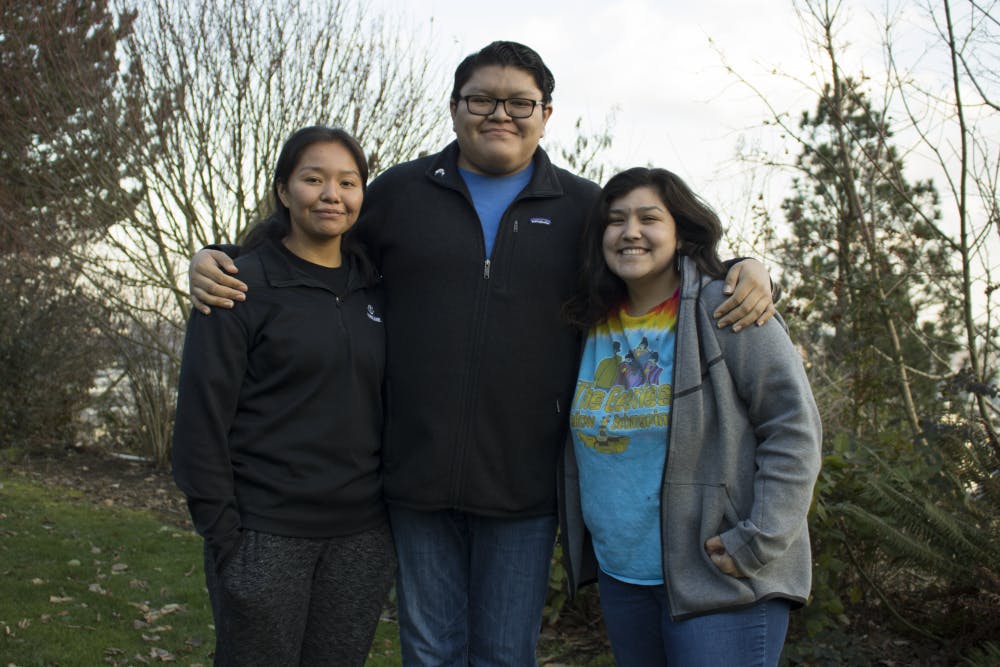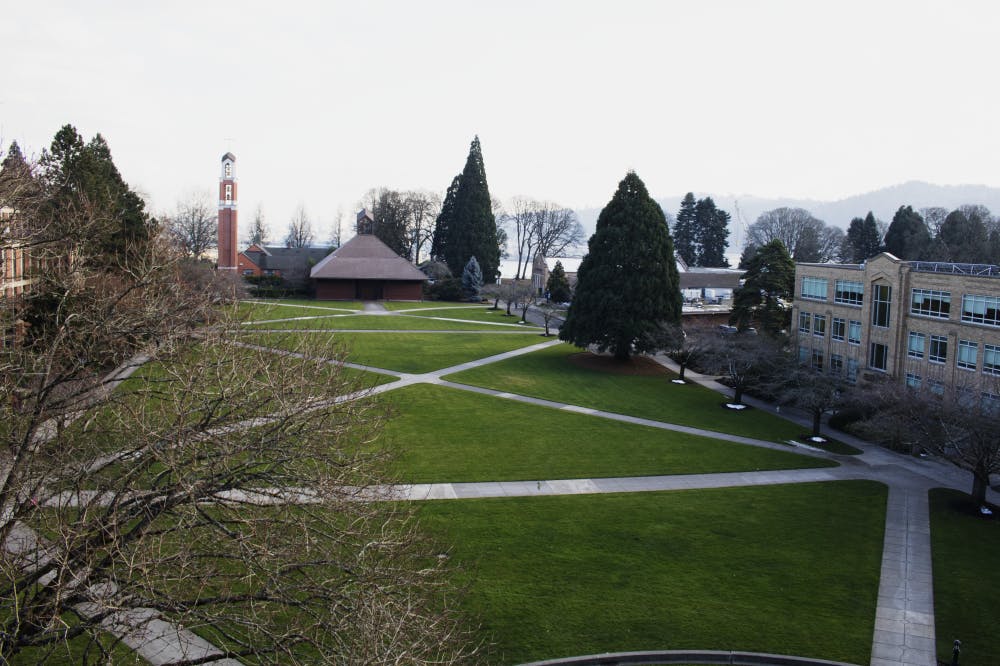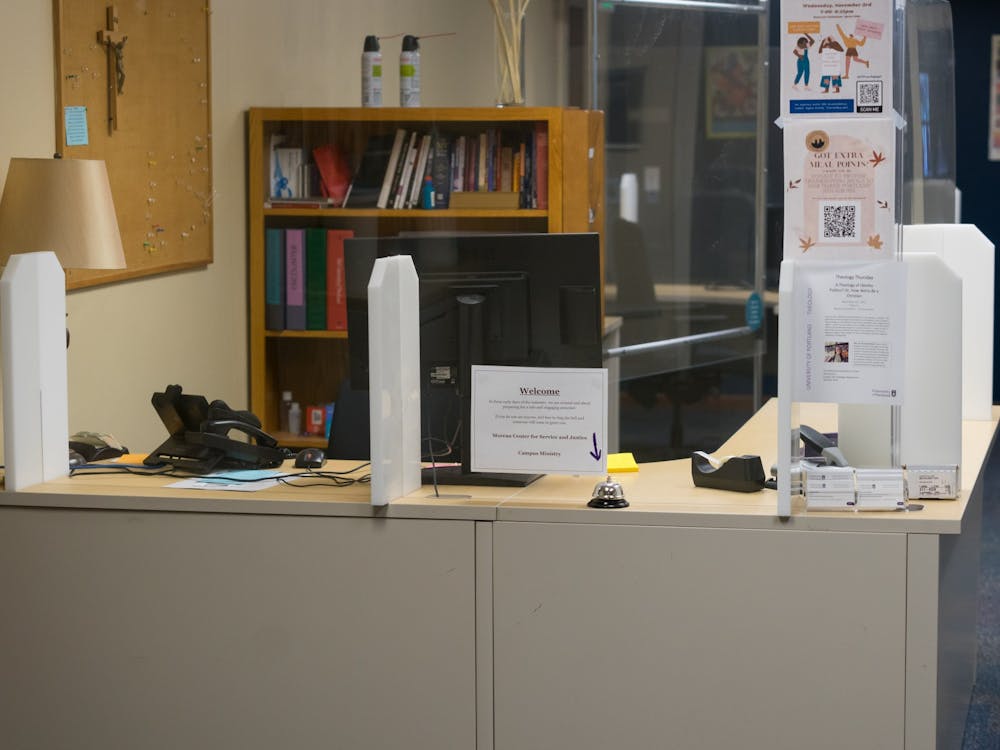Long before Mehling towered over west quad, before students cheered on the Pilots at Merlo Field and even before Buckley Center was built, the land on which the University of Portland campus resides was inhabited by the Native American tribes of what is now the Portland-Metro area.
Some of the tribes that were known to have set up their communities here and along the Columbia River were the Multnomah, Wasco, Cowlitz, Kathlamet, Clackamas, Bands of Chinook, Tualatin, Kalapuya and Molalla tribes.
Through a land acknowledgement added to the UP website last year, the university formally recognized that the land it occupies was originally populated with Native American tribes. The statement says that the University of Portland acknowledges the land it sits on and thanks the “original caretakers of this land.”
“In most tribes, Native philosophy is that we’re essentially caretakers of land that was given to us as a gift from our creator,” sophomore president of the Native American Alliance Sonny Olguin said. “With that idea of not owning land, the land acknowledgement is kind of using that same philosophy by saying ‘caretakers.’ I think it’s important that UP has one because it’s very educational.”
Olguin said that Native American history is often overlooked in the education system and the land acknowledgement is a good start for encouraging students to learn more about the full history of Native Americans.
This land acknowledgement was adopted by the university last year after Diversity and Inclusion Program Coordinator Yuri Hernández Osorio and Assistant Director of Admissions Cassy Esparza attended professional development conferences centered on race, ethnicity and general admissions.
Esparza said that even though her and Hernández Osorio went to different conferences, there was a common emphasis on the importance of having a land acknowledgement in higher education. This convinced both women that the university needed to add some kind of statement that recognized the land the campus sits on.
“We can at least acknowledge the land that we occupy and with that, we’re acknowledging your existence,” Hernández Osorio said. “I think that’s one of the many things the Native population faces — not getting their existence acknowledged...I think that’s the bare minimum we can do.”

When Hernández Osorio returned from the conference, she contacted the Native American Youth and Family Center located near campus. The organization provided her with a land acknowledgement statement to use on the website.
Hernández Osorio said that the land acknowledgement is already having an impact on the community. Every Diversity Dialogue event this year began with a reading of the acknowledgement and the Office of Admissions has also integrated the statement into larger events such as visitation days which also begin with a reading of the land acknowledgement.
Esparza said that she hopes that student tour guides will begin tours with the land acknowledgement and that eventually, faculty will include the statement in their syllabi.
“I do think that a conversation needs to be had about where that land acknowledgement is coming to the surface because it tends to come in spaces where Diversity and Inclusion Programming has had some kind of influence,” senior and ASUP President Sitara Nath said. Nath began her state of the campus address this fall by reading the land acknowledgement. “I think that there’s something very important about the fact that we need to start expanding it to not just include that. It should be very much integrated into our overall campus.”
Esparza added that it takes effort from everyone to make changes happen, but she thinks the result will be a more supportive and inclusive community.
“I think it’s important that we think about the small ways that we can implement something like a land acknowledgement,” Esparza said. “It starts with things on the website, but then it starts with things like how we run certain events...It’s these little things that I think if people can get on board with it, I really encourage them to do so.”
According to Institutional Data provided annually by the University, less than one percent of undergraduates report being Native American. Esparza hopes that the land acknowledgement will encourage more Native American students to apply to UP. She also said that she has already received positive feedback from prospective students about the land acknowledgement.
Esparza and Hernández Osorio both agree that UP was a little behind when it comes to supporting the Native American community when compared to other schools like Portland State University, which has a Native American student and community center on their campus.
Sophomore treasurer of NAA Devonna Begay said that all students can come to NAA meetings and events to support their community on campus and learn more about the land acknowledgement and Native American culture and history.
“I think it’s great because we’re moving forward but also educating people about history,” Begay said. “I feel like that’s a huge part of it.”
Maddie Pfeifer is a reporter for The Beacon. She can be reached at pfeifer21@up.edu.








